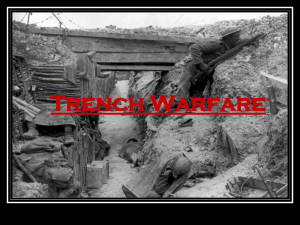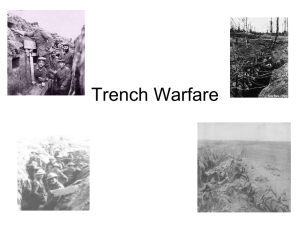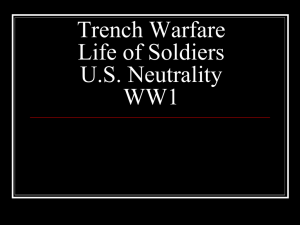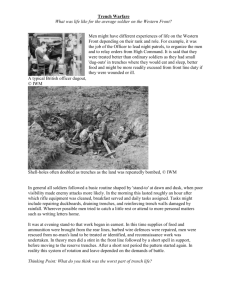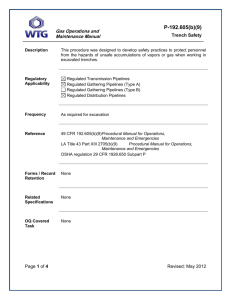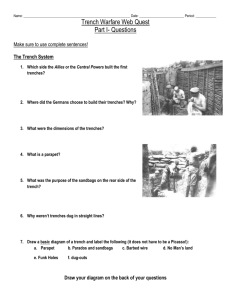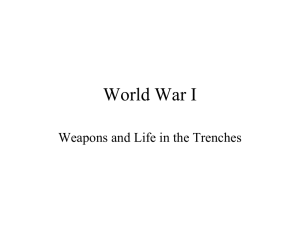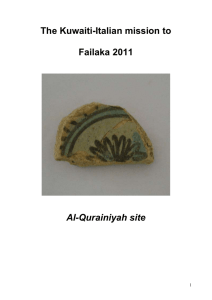lesson title
advertisement
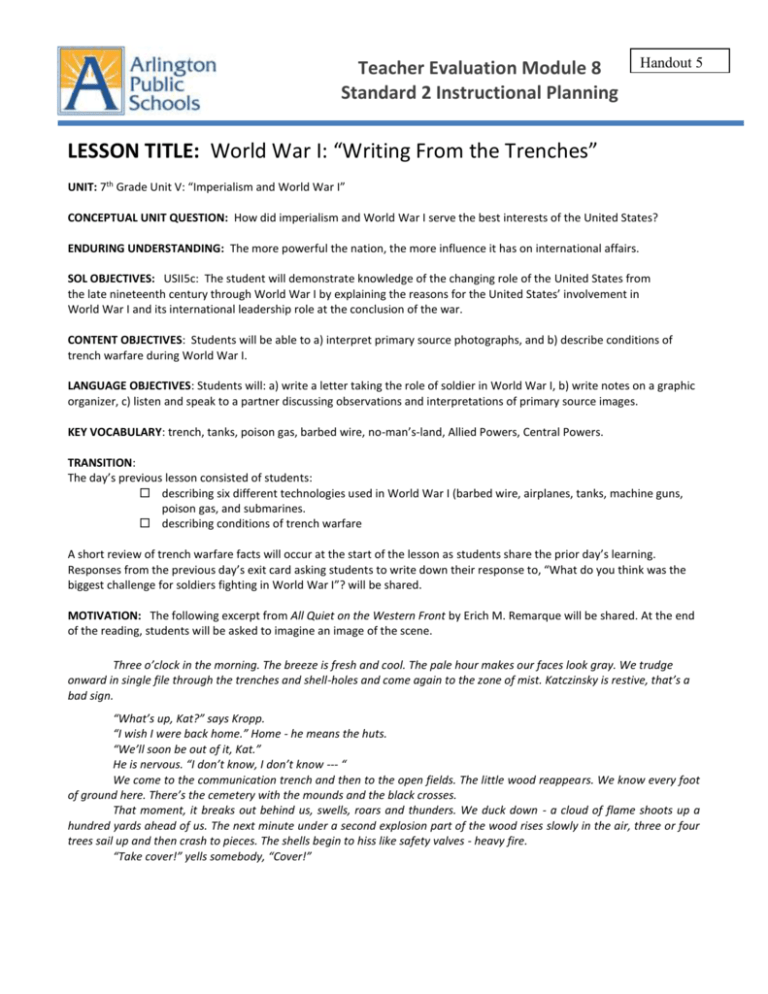
Teacher Evaluation Module 8 Standard 2 Instructional Planning Handout 5 LESSON TITLE: World War I: “Writing From the Trenches” UNIT: 7th Grade Unit V: “Imperialism and World War I” CONCEPTUAL UNIT QUESTION: How did imperialism and World War I serve the best interests of the United States? ENDURING UNDERSTANDING: The more powerful the nation, the more influence it has on international affairs. SOL OBJECTIVES: USII5c: The student will demonstrate knowledge of the changing role of the United States from the late nineteenth century through World War I by explaining the reasons for the United States’ involvement in World War I and its international leadership role at the conclusion of the war. CONTENT OBJECTIVES: Students will be able to a) interpret primary source photographs, and b) describe conditions of trench warfare during World War I. LANGUAGE OBJECTIVES: Students will: a) write a letter taking the role of soldier in World War I, b) write notes on a graphic organizer, c) listen and speak to a partner discussing observations and interpretations of primary source images. KEY VOCABULARY: trench, tanks, poison gas, barbed wire, no-man’s-land, Allied Powers, Central Powers. TRANSITION: The day’s previous lesson consisted of students: describing six different technologies used in World War I (barbed wire, airplanes, tanks, machine guns, poison gas, and submarines. describing conditions of trench warfare A short review of trench warfare facts will occur at the start of the lesson as students share the prior day’s learning. Responses from the previous day’s exit card asking students to write down their response to, “What do you think was the biggest challenge for soldiers fighting in World War I”? will be shared. MOTIVATION: The following excerpt from All Quiet on the Western Front by Erich M. Remarque will be shared. At the end of the reading, students will be asked to imagine an image of the scene. Three o’clock in the morning. The breeze is fresh and cool. The pale hour makes our faces look gray. We trudge onward in single file through the trenches and shell-holes and come again to the zone of mist. Katczinsky is restive, that’s a bad sign. “What’s up, Kat?” says Kropp. “I wish I were back home.” Home - he means the huts. “We’ll soon be out of it, Kat.” He is nervous. “I don’t know, I don’t know --- “ We come to the communication trench and then to the open fields. The little wood reappears. We know every foot of ground here. There’s the cemetery with the mounds and the black crosses. That moment, it breaks out behind us, swells, roars and thunders. We duck down - a cloud of flame shoots up a hundred yards ahead of us. The next minute under a second explosion part of the wood rises slowly in the air, three or four trees sail up and then crash to pieces. The shells begin to hiss like safety valves - heavy fire. “Take cover!” yells somebody, “Cover!” PRESENTATION: The teacher will read the day’s content and language objectives with the whole class. Students will receive their two note-taking pages for the day and put them in their interactive student notebook. PRACTICE: The teacher will explain that WWI was captured by photographers. As students have already imagined a scene, they will now analyze actual pictures of the conflict with the goal of better understanding life in the trenches. The teacher will review with the class the steps in analyzing primary source photographs. The three steps are: a) making observations, b) investigating the meaning of each observation, and c) using all of the information gathered to interpret the image. One image of trench warfare will be analyzed together as a whole class. ACTIVITY Students will be grouped in pairs (or groups of three) and placed at a station in the room with an enlarged copy of one image. After every group is in position at one of the images, groups are given about 5 minutes to go through the steps in analyzing the image, filling out their notes page as they go through each step. Differentiation Note: Students are grouped in mixed ability paired. HILT and SPED students are generally grouped in an integrated way with other students. Students are instructed to work together finding observations in the image. Time should permit groups to rotate to 4 stations. Teacher will circulate and probe student thinking at the stations, checking to make sure students are understanding the important details of the images. Teacher will explain that students will now move into trenches that they will build. Before movement to the “trenches” students will share some details about trenches that they learned about during the photo analysis. The class will be divided into two groups and positioned at opposite ends of the room. Both groups will be directed to use their classroom chairs and desks to assemble a trench for their side and then lay down in their trench. They should bring their notebook with them once they have assembled the trench. As a class the teacher will lead a quick review of the classroom setup including the names of the two sides, the practicality of the trench, and the location of no-man’s land. Students will be given the directions/rubric for the letter writing assignment. Once the task has been given and described, students will lie down in their trench and begin writing their draft. As the students are writing, loud battle sounds will be played in the background. Students will be encouraged to use their notebook and use information they learned in previous lessons and most importantly their primary source analysis done earlier in the lesson. Differentiation Note: HILT and SPED students are offered a start-up page to get them started on the details they will use in the letter writing project. CLOSURE: The teacher will review the day’s objectives through a whole class wrap-up with each student sharing something he or she learned. Students will discuss the following question based on their classroom learning: Despite the challenges of trench warfare, why do you think it was in the best interest of the United States to be in World War I? ASSESSMENT: Students will be assessed on the final copy of their trench letter. A rubric for this assignment will be provided.
